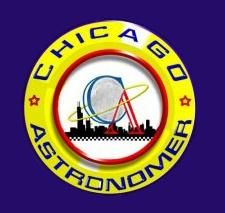Post by starbux on Aug 15, 2008 15:32:28 GMT -6
Start-up date for LHC announced
The particle accelerator will attempt to recreate conditions similar to those of the universe just after the Big Bang.
Provided by CERN
August 7, 2008
The European Organization for Nuclear Research (CERN) has announced that the first attempt to circulate a beam in the Large Hadron Collider (LHC) will be made September 10. This news comes as the cool down phase of commissioning CERN's new particle accelerator reaches a successful conclusion. Television coverage of the start-up will be made available through Eurovision.
The LHC is the world's most powerful particle accelerator, producing beams 7 times more energetic than any previous machine, and around 30 times more intense when it reaches design performance, probably by 2010. Housed in a 17-mile (27 kilometers) tunnel, it relies on technologies that would not have been possible 30 years ago. The LHC is, in a sense, its own prototype.
Starting up such a machine is not as simple as flipping a switch. Commissioning is a long process that starts with the cooling down of each of the machine's eight sectors. This is followed by the electrical testing of the 1,600 superconducting magnets and their individual powering to nominal operating current. These steps are followed by the powering together of all the circuits of each sector, and then of the eight independent sectors in unison in order to operate as a single machine.
By the end of July, this work was approaching completion, with all eight sectors at their operating temperature of 1.9 degrees above absolute zero (-456° Fahrenheit [-271° Celsius]). The next phase in the process is synchronization of the LHC with the Super Proton Synchrotron (SPS) accelerator, which forms the last link in the LHC's injector chain. Timing between the two machines has to be accurate to within a fraction of a nanosecond. A first synchronization test is scheduled for the weekend of August 9, for the clockwise-circulating LHC beam, with the second to follow over the coming weeks. Tests will continue into September to ensure that the entire machine is ready to accelerate and collide beams at an energy of 5 teraelectron volts (TeV) per beam, the target energy for 2008. Force majeure notwithstanding, the LHC will see its first circulating beam September 10 at the injection energy of 450 gigaelectron volts (0.45 TeV).
Once stable circulating beams have been established, they will be brought into collision, and the final step will be to commission the LHC's acceleration system to boost the energy to 5 TeV, taking particle physics research to a new frontier.
"We're finishing a marathon with a sprint," said LHC project leader Lyn Evans. "It's been a long haul, and we're all eager to get the LHC research program underway."
I've been waiting for news of this. Now as long as we all hold our breaths on September 10 we won't get sucked into an artificially created black hole. ;D
Seriously though, there will be some great new info about the early universe and subatomic physics from this.
www.astronomy.com/asy/default.aspx?c=a&id=7272
The particle accelerator will attempt to recreate conditions similar to those of the universe just after the Big Bang.
Provided by CERN
August 7, 2008
The European Organization for Nuclear Research (CERN) has announced that the first attempt to circulate a beam in the Large Hadron Collider (LHC) will be made September 10. This news comes as the cool down phase of commissioning CERN's new particle accelerator reaches a successful conclusion. Television coverage of the start-up will be made available through Eurovision.
The LHC is the world's most powerful particle accelerator, producing beams 7 times more energetic than any previous machine, and around 30 times more intense when it reaches design performance, probably by 2010. Housed in a 17-mile (27 kilometers) tunnel, it relies on technologies that would not have been possible 30 years ago. The LHC is, in a sense, its own prototype.
Starting up such a machine is not as simple as flipping a switch. Commissioning is a long process that starts with the cooling down of each of the machine's eight sectors. This is followed by the electrical testing of the 1,600 superconducting magnets and their individual powering to nominal operating current. These steps are followed by the powering together of all the circuits of each sector, and then of the eight independent sectors in unison in order to operate as a single machine.
By the end of July, this work was approaching completion, with all eight sectors at their operating temperature of 1.9 degrees above absolute zero (-456° Fahrenheit [-271° Celsius]). The next phase in the process is synchronization of the LHC with the Super Proton Synchrotron (SPS) accelerator, which forms the last link in the LHC's injector chain. Timing between the two machines has to be accurate to within a fraction of a nanosecond. A first synchronization test is scheduled for the weekend of August 9, for the clockwise-circulating LHC beam, with the second to follow over the coming weeks. Tests will continue into September to ensure that the entire machine is ready to accelerate and collide beams at an energy of 5 teraelectron volts (TeV) per beam, the target energy for 2008. Force majeure notwithstanding, the LHC will see its first circulating beam September 10 at the injection energy of 450 gigaelectron volts (0.45 TeV).
Once stable circulating beams have been established, they will be brought into collision, and the final step will be to commission the LHC's acceleration system to boost the energy to 5 TeV, taking particle physics research to a new frontier.
"We're finishing a marathon with a sprint," said LHC project leader Lyn Evans. "It's been a long haul, and we're all eager to get the LHC research program underway."
I've been waiting for news of this. Now as long as we all hold our breaths on September 10 we won't get sucked into an artificially created black hole. ;D
Seriously though, there will be some great new info about the early universe and subatomic physics from this.
www.astronomy.com/asy/default.aspx?c=a&id=7272





